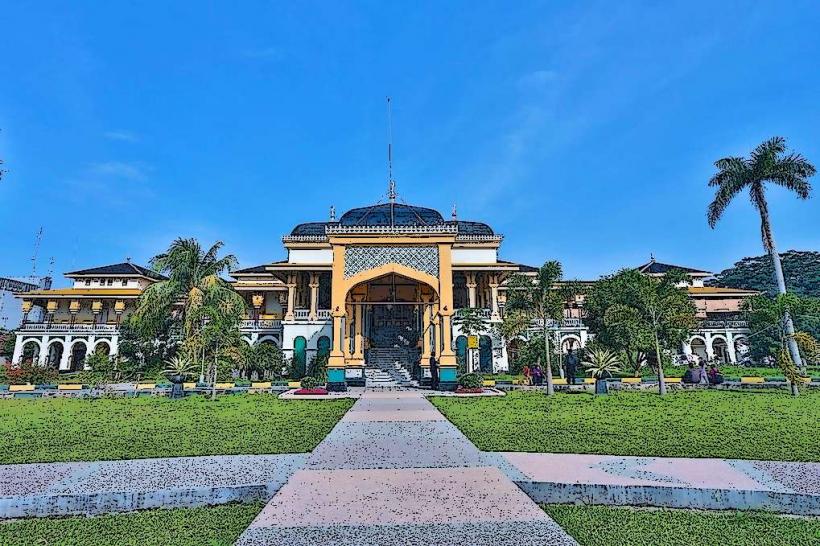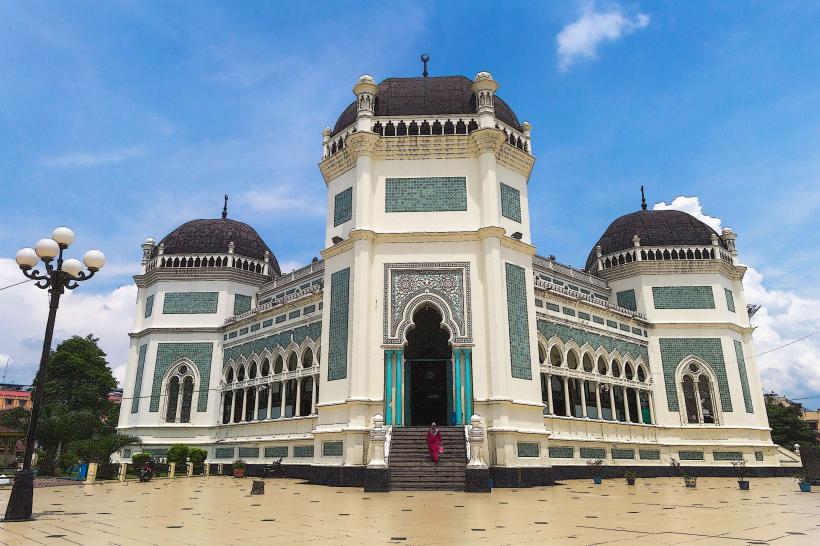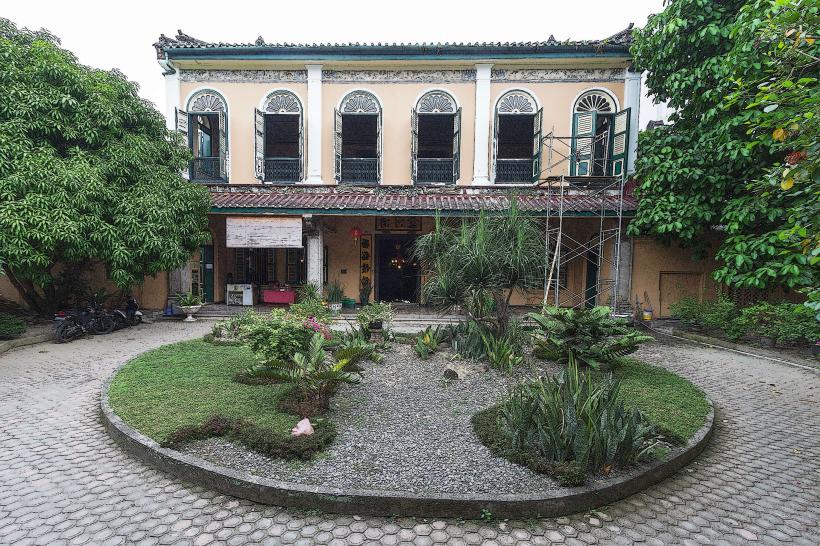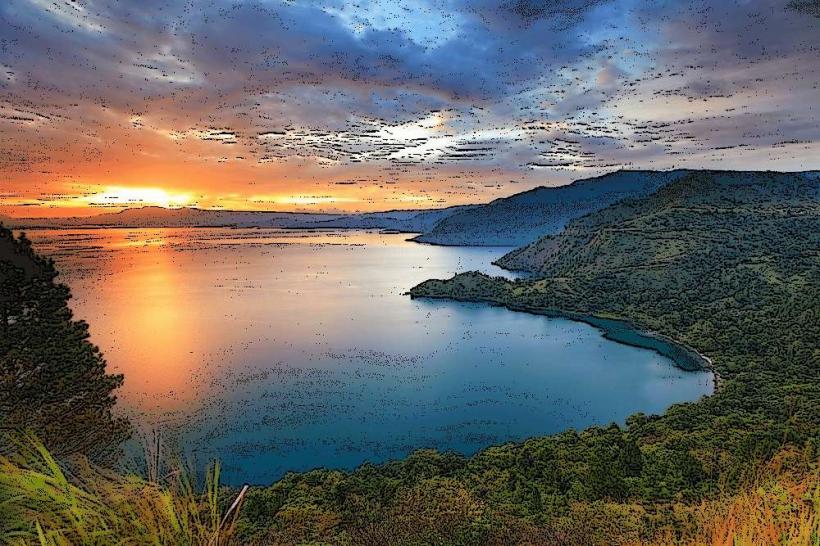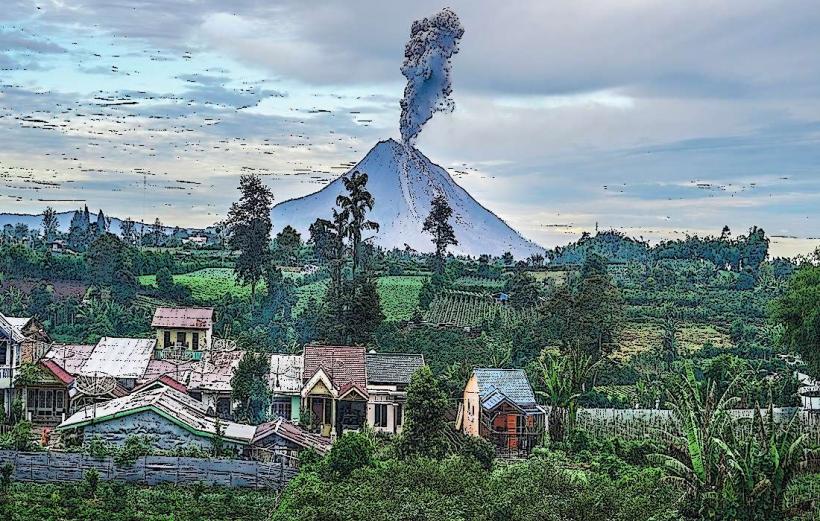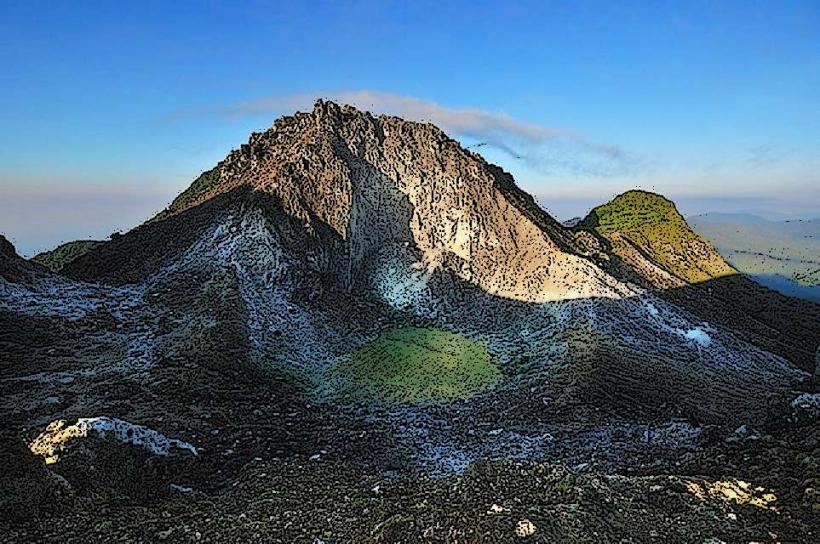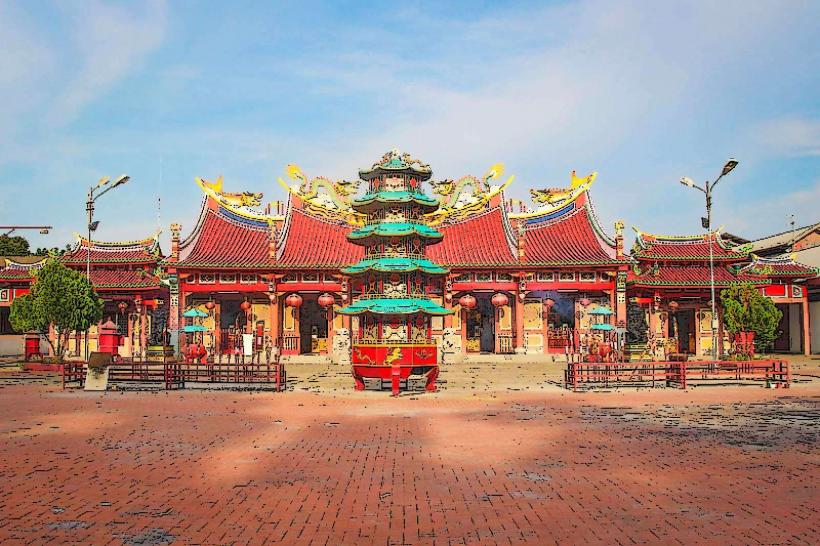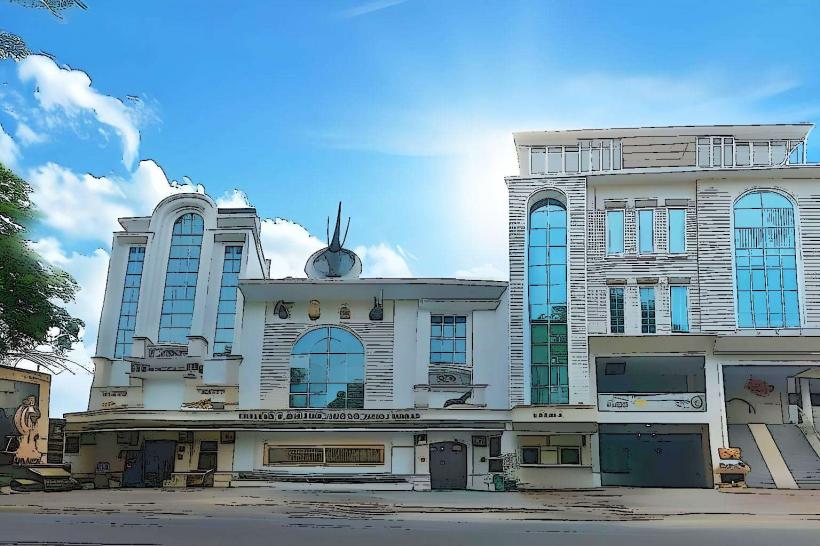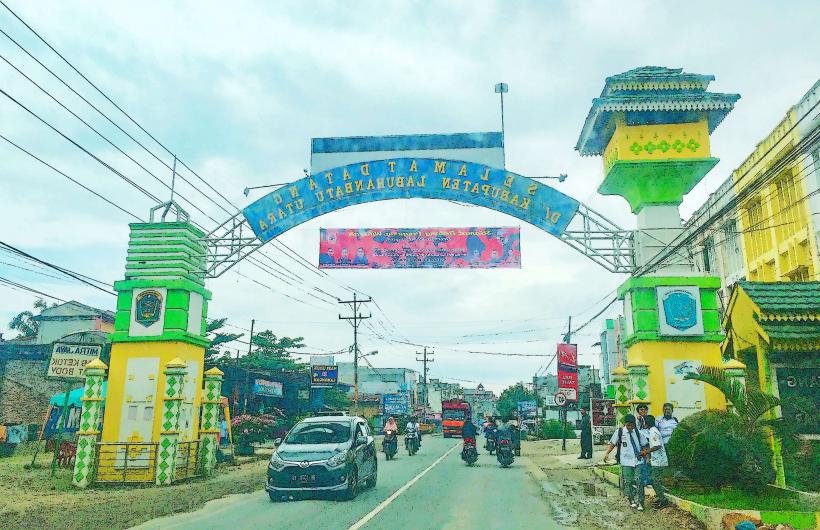Information
Landmark: Deli RiverCity: Medan
Country: Indonesia
Continent: Asia
Deli River (Sungai Deli) is a significant river located in the North Sumatra province of Indonesia. It flows through the Medan area, the provincial capital, and is an important watercourse that has played a key role in the development and history of the region. Here is a detailed overview of Deli River:
Overview of Deli River
- Location: North Sumatra, Indonesia, flowing through the city of Medan and its surrounding areas.
- Length: The Deli River is approximately 50 km (31 miles) long, though its course varies in certain sections due to urbanization and changes in the river's flow.
- Source: The river originates from the Mount Sibayak and Mount Sinabung areas, which are active volcanoes located to the west of Medan, in the Karo Highlands.
- Mouth: The river flows towards the Strait of Malacca, draining into the Malacca Strait on the northeastern coast of Sumatra.
Importance of Deli River
- Historical Significance:
- The Deli River played an essential role in the early development of Medan. Historically, the river served as a critical route for transportation and commerce, particularly during the period when the region was a key trading center for tobacco and other agricultural products.
- In the 19th century, Medan became a major hub for the Dutch colonial administration and tobacco plantations, with the river being a vital waterway for moving goods from the plantation areas to Medan and onwards to the coast for export.
- Cultural and Social Role:
- The river has had an impact on the local Malay and Batak communities, serving as a natural resource for fishing, irrigation, and agriculture.
- As a waterway, the Deli River contributed to the development of the local infrastructure and the growth of settlements along its banks, especially in Medan.
- Modern-Day Significance:
- In the modern era, Deli River is still important for local transportation and industry, although it faces challenges such as pollution and urbanization. Some parts of the river are used for recreational activities such as boat rides and fishing.
- The river also contributes to the region’s agriculture and irrigation systems.
Features and Characteristics
Geography:
- The Deli River runs through several villages and towns, with its main course running through Medan, the largest city in North Sumatra.
- It has a relatively wide channel, particularly near its mouth and in urban areas, though it narrows in the upstream sections as it passes through forested and rural landscapes.
Flora and Fauna:
- The river basin is home to various plant species, particularly along its riparian zones. The surrounding areas, particularly near the upstream parts, have lush tropical vegetation.
- The river is home to several species of fish and is a source of livelihood for local fishermen.
Pollution Issues:
- As Medan has grown rapidly in recent decades, Deli River has faced increasing pollution from industrial waste, residential runoff, and improper waste disposal practices.
- Efforts have been made in recent years to clean the river and improve waste management, but pollution remains a significant issue.
Attractions Near Deli River
While Deli River itself is primarily a waterway and a functional part of the region, it has surrounding areas and points of interest that are worth visiting:
Maimun Palace:
- Located in Medan, near the banks of the Deli River, Maimun Palace is a historical landmark and the residence of the Sultan of Deli. The palace is an example of Malay and Islamic architecture and is one of the key attractions in the city.
Taman Buaya (Crocodile Park):
- Situated along the river’s course, the Taman Buaya is a park dedicated to the conservation of crocodiles. Visitors can learn about these reptiles and other wildlife in the area.
Sungai Deli Walk:
- The Deli River Walk is an initiative to create a more pedestrian-friendly area along the river, with green spaces, walking paths, and viewpoints where people can enjoy views of the river and surrounding urban landscape.
Medan City:
- Medan itself has many attractions, such as the Grand Mosque of Medan, the Istana Maimun, and Tjong A Fie Mansion, all of which reflect the city's rich cultural and colonial history. The Deli River flows through the city, making it a central feature of the urban landscape.
Economic and Environmental Impact
- Agriculture: The Deli River supports agriculture, particularly rice and vegetables, in the rural areas surrounding Medan. The fertile soils along the river's banks make it ideal for farming.
- Pollution: As mentioned earlier, the river faces challenges related to urbanization, such as pollution from industrial activities, sewage, and solid waste. There have been several efforts by local governments and environmental organizations to tackle pollution and improve the river’s water quality.
- Flooding: The Deli River is prone to flooding during the rainy season, particularly in the lower reaches and urban areas. Flooding can disrupt local communities and infrastructure, and measures to manage flooding and improve drainage are being implemented.
Conclusion
The Deli River plays a vital role in the geography, history, and economy of North Sumatra. It is an essential waterway for Medan and its surrounding areas, supporting transportation, agriculture, and industry. Though the river has faced pollution challenges due to urbanization, its significance remains high both culturally and economically. Whether you're visiting for its historical value, the surrounding attractions, or the chance to observe its natural beauty, the Deli River is an important feature of North Sumatra's landscape.

